Mark Twain in Montana
Another night of alternate tranquility and turmoil. But morning came, by and by. It was another glad awakening to fresh breezes, vast expanses of level greensward, bright sunlight, an impressive solitude utterly without visible human beings or human habitations, and an atmosphere of such amazing magnifying properties that trees that seemed close at hand were more than three miles away….Even at this day it thrills me through an through to think of the life, the gladness and the wild sense of freedom that used to make the blood dance in my veins on those fine overland mornings!

Along about an hour after breakfast we saw the first prairie dog villages, the first antelope, and the first wolf. If I remember rightly, this latter was the regular cayote (pronounced ky-o-te)…He was not a pretty creature or respectable either. The coyote is a long, slim, sick and sorry-looking skeleton, with a gray wolf-skin stretched over it, a tolderably bushy tail that forever sags down with a despairing expression of forsakenness and misery, a furtive and evil eye, and a long. Sharp face, with slightly lifted lip and exposed teeth. He has a general slinking expression all over. The coyote is a living, breathing allegory of Want. He is always hungry. He is always poor, out of luck, and friendless. The meanest creatures despise him, and even the fleas would desert him for velocipede. He is so spiritless and cowardly that even while his exposed teeth are pretending a threat, the rest of his face is apologizing for it. And he is so homely!
Note. After more insults, Twain concludes by stating: We soon learned to recognize the sharp, vicious bark of the cayote as it came across the murky plain at night to disturb our dreams among the mail-sacks; and remembering his forlorn aspect and his hard fortune, made shift to wish him the blessed novelty of a long day’s good luck and a limitless larder the morrow.
Note: Roughing It was Twain’s first book. Twenty plus years later he took a world tour to raise money and came to Montana again.
Here is Pat Williams’ (U.S. House of Representatives 1979-97) account:
In 1895 at the age of 59 Mark Twain began a world tour, in which he performed in more Montana cities (five) than in any other state.
[In August] the tour train crossed North Dakota and into Montana with his first performance in Great Falls.
Mr. Paris Gibson, the founder of the city, escorted the family to the Giant Springs and the nearby Great Falls of the Missouri. The Rainbow Dam, which would inundate the falls, was still two years from construction.

That evening Twain lectured at the Opera House, a building which stood for the next 60 years. Tired from the long day’s trip to Giant Springs and his lingering leg infection, Twain was disappointed in his evening’s performance. The next morning the family boarded the train to Butte where he performed that evening at Maguire’s Grand Opera House. Twain entertained for an hour and a half with stories about Huckleberry Finn, Tom Sawyer, the jumping frog, and his own efforts to steal a watermelon. The next day’s newspaper reported, according to Butte historian George Everett, “It is doubtful if Maguire’s Opera House ever contained a more delighted audience.” [After it burned down in 1912, the Opera House was replaced by the Leggat Hotel in 1914. ~ Ed. note]
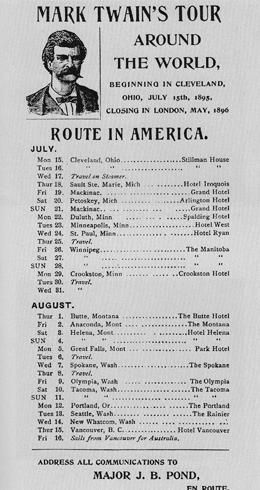
Twain, too, was pleased, writing in his journal how he enjoyed the Butte audience, “intellectual and dressed in perfect taste — London, Parisian, New York audience — out in the mines.” Then on to the elegant Silver Bow Club for champagne and stories. Twain, it was noted, ordered scotch. The tour’s next stop was Anaconda where Twain rested overnight at Marcus Daly’s sumptuous Montana Hotel and the following day performed at the then nearby Evans Opera House.
The tour reached Helena where Twain was the guest of honor at the Montana Club. The historian Robert Cooper relates that a few people arrived from Twain’s former stomping grounds Virginia City, Nevada. A toast to Twain was interrupted by one of those Nevada guests who shouted, “Before we go further, I want to say to you, Sam Clemens, that you did me a dirty trick…and I’ve come here to have a settlement with you.” A long awkward silence followed and Twain finally responded, “Let’s see. That was before I reformed, wasn’t it?” The drinks and laughter resumed. Only eight years later the elegant club was destroyed by fire and a new Montana Club was built on the site.

Twain’s next stop was Missoula where he rested at the original Florence Hotel and lectured at Missoula’s Bennett Opera House. The next day Twain visited Fort Missoula and its 25th U.S. Colored Regiment. Twain, who all his life had deplored the bigotry and racism he found throughout America, happily noted that “black officers were saluted just like any other.”
On Aug. 6, 1895, Twain left Montana. The tour would take him to the Fiji Islands, Australia, New Zealand, India, Sri Lanka, and South America. His journey lasted one year and one day.
Roughing It is a light-hearted account of Mark Twain’s adventures in 1870-1 when he escaped the Civil War and joined his brother, recently appointed Secretary of the Nevada Territory, as they cross the West by stagecoach. In his first view of Montana, Twain captures its essential spirit. He notices coyotes and this is how he describes them. (Note: He never claimed accuracy, asking only for readers indulgence, which they gladly gave.) This excerpt is from volume #21 in the Library of America series. Courtesy of The Library of America.
To read more of Twain on cayotes, go to p. 561 in Roughing It, at http://www.loa.org/volume.jsp?RequestID=84.





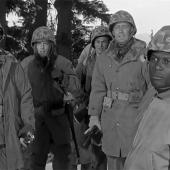
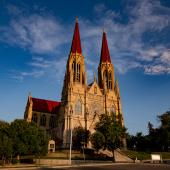
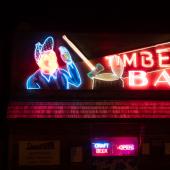
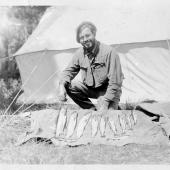

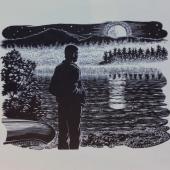

Leave a Comment Here